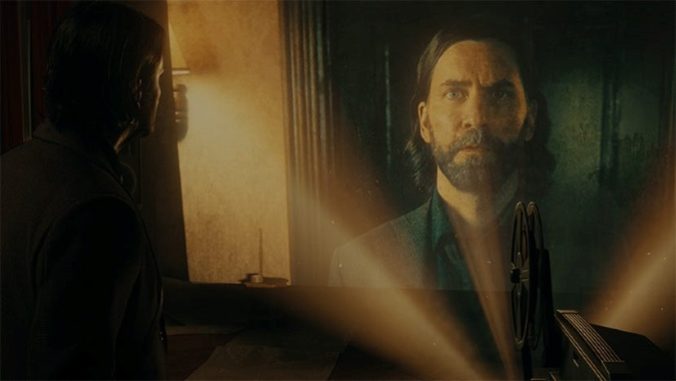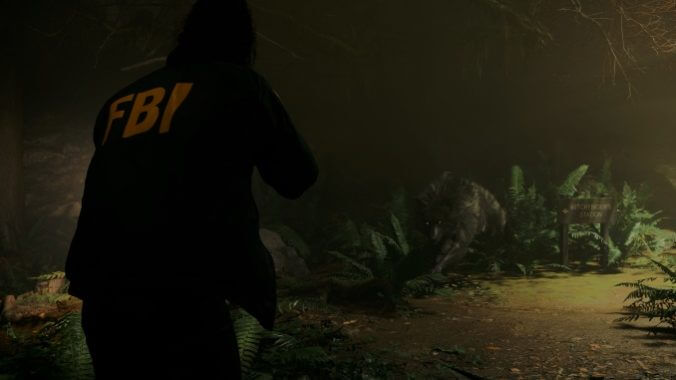It’s Not an Alan Wake II Review
Adrift in the ocean of Remedy's bountiful postmodern headtrip

I’m not ready to write an Alan Wake II review. I’ve played maybe 10 hours since we got a code on Monday afternoon, and I’m pretty sure I’m nowhere near the end. The embargo beckons, though, and I can’t say no to traffic. The original Alan Wake, of course, took about 10 hours in full to finish, which made it a breath of fresh air compared to most games, even back in 2010. Sam Lake, its writer (and co-star), says the sequel requires twice that much time, making it the longest game yet from Remedy Entertainment, the designers of Control and the first two Max Payne games. I’m as vocal as anybody I know about games dragging on for way too long these days, but so far I’m not feeling that way about Alan Wake II. Sure, it’s already eaten up as much time as its excellent predecessor, but it hasn’t felt bloated or padded yet. With Alan Wake II Remedy is taking the time it needs to tell its story, and it’s kept me under its sway along the way.
That story is a more complex and confusing one than Alan Wake’s, with two protagonists and at least one additional new alter ego for Wake himself. During the game’s first passage you play not as Wake but as Saga Anderson, an FBI agent picking up on Wake’s trail 13 years after his disappearance during the first game. Along with her partner, Alex Casey, who shares a name with Wake’s most popular fictional creation (and a face with Lake himself, who plays the character), Anderson returns to the Twin Peaks-inspired Northwestern town of Bright Falls to investigate cult activity and the apparent murder of Robert Nightingale, an FBI agent from the first Alan Wake. Anderson essentially fills the role Wake did in 2010, as a confused outsider reacting to the otherworldly, metafictional madness swarming around this unassuming small town.
Instead of stumbling about in the dark forest with just a flashlight and some flares, though, Anderson brings both a service revolver and an investigative mind to the proceedings. The shooting is fairly self-explanatory to Wake vets; you use your flashlight to burn away the darkness shielding your enemies, and then plug away with that pistol until they fall. (Aim for the big glowing red spot, natch.) It’s very familiar if you’ve played the original.
The mystery-solving side of Alan Wake II is one of many major additions to the game, and I’m still not sure if it’s a good one or not. As she collects clues and connects the dots between the weird goings-on in Bright Falls and the neighboring Finnish settlement of Watery, Anderson will regularly retreat to a mental field office where she analyzes all the data. It might only exist within her mind, but it’s an actual three-dimensional in-game room that she moves throughout, with the kind of photo- and string-covered mystery board familiar from the Always Sunny meme. As you find clues by searching crime scenes and other locations within the game, they’ll become available within Anderson’s mind place (she literally calls it her mind place within the game); all you have to do is select a clue and then place it on the correct part of the board for Anderson to make an important realization about what she’s looking for. There’s an even simpler mechanic where she profiles various subjects; here all you have to do is select a question or piece of data within the mind place and Anderson will suddenly have a mystical revelation about the case, with her hunches unerringly turning out right.
That might sound exceptionally convenient until you remember one of the core conceits of both Alan Wake games. Wake is a novelist, a Stephen King-style writer of mysteries, thrillers, science fiction, and horror books, and even though he’s a playable character seemingly controlled by the decisions of the player, he’s also writing his games as the player plays through them. Remedy has always loved a good meta twist, and Alan Wake II is predicated entirely upon questions of authorship, ownership, and free will. Saga Anderson being a real-life Cassandra who doesn’t have to convince anybody of the truth of her visions stops feeling like an overly convenient videogame contrivance when the game highlights how everything within it is a contrivance.

With its Pacific Northwest setting and overt Twin Peaks references, Saga Anderson’s portions of the story feel the most like the first Alan Wake, even if Wake himself isn’t a playable character. The other half of Alan Wake II does star Wake, and it’s a much smarter, trippier, and more unique exploration of the game’s meta fascination. Whereas Saga’s story feels like a fairly rote continuation of Alan Wake so far, Wake’s story expands on it, taking it into some deeply unsettling and disturbing territory.
In his part of the game, Alan Wake is still trapped within the spare writing room he winds up in at the end of the first game. As with Saga’s mind place, he (and thus the player) returns regularly to this room to look over what he’s discovered, revisit the music and full-motion video clips he’s uncovered along the way, and to also level up some of his skills in a predictably oblique way. Instead of plotting out mysteries, though, Wake uses this time to write new scenes for his latest book, which he hopes will double as his own escape from the weird prison he’s trapped in by the Dark Presence. (You might know it in human form as Mr. Scratch, Wake’s evil doppelganger; once more, Sam Lake loves David Lynch and Twin Peaks. Hell, the shadows that plague Anderson and Wake could straight up be the woodsmen who ask for a light after the Trinity test.)
